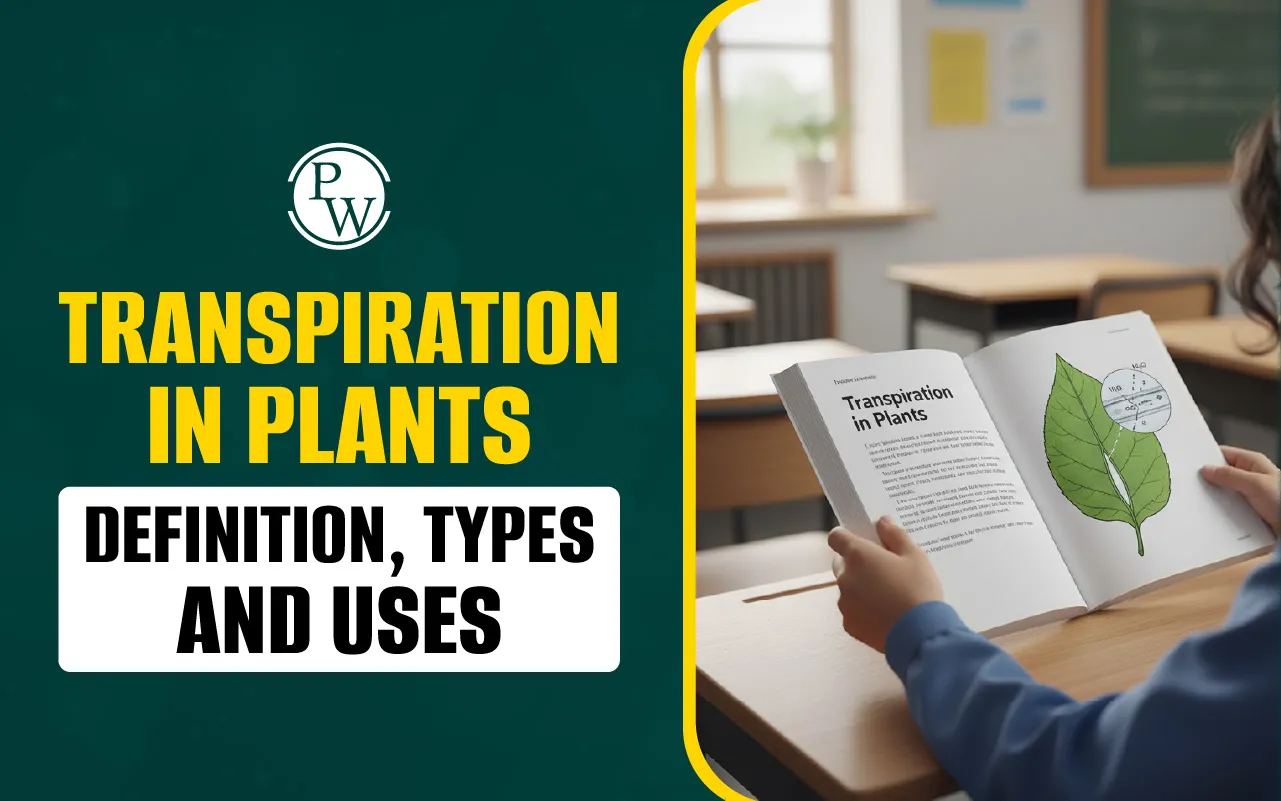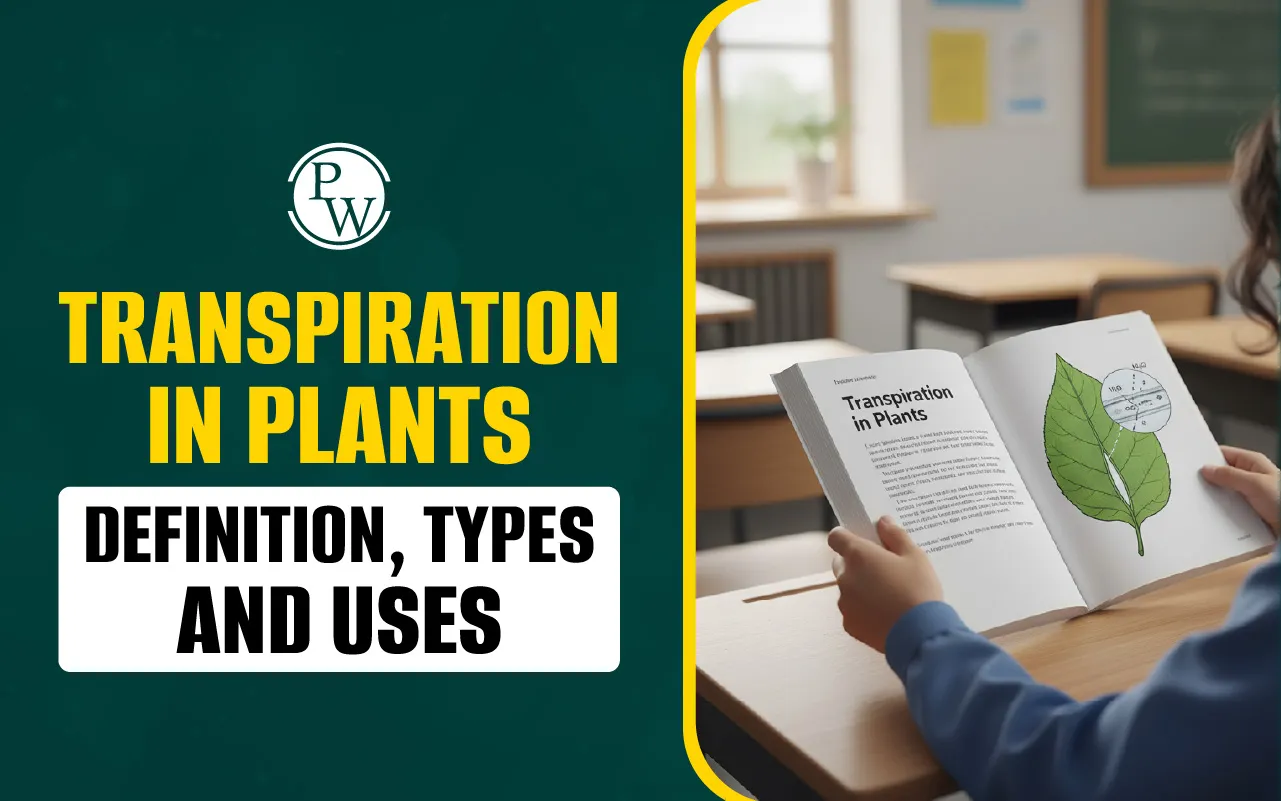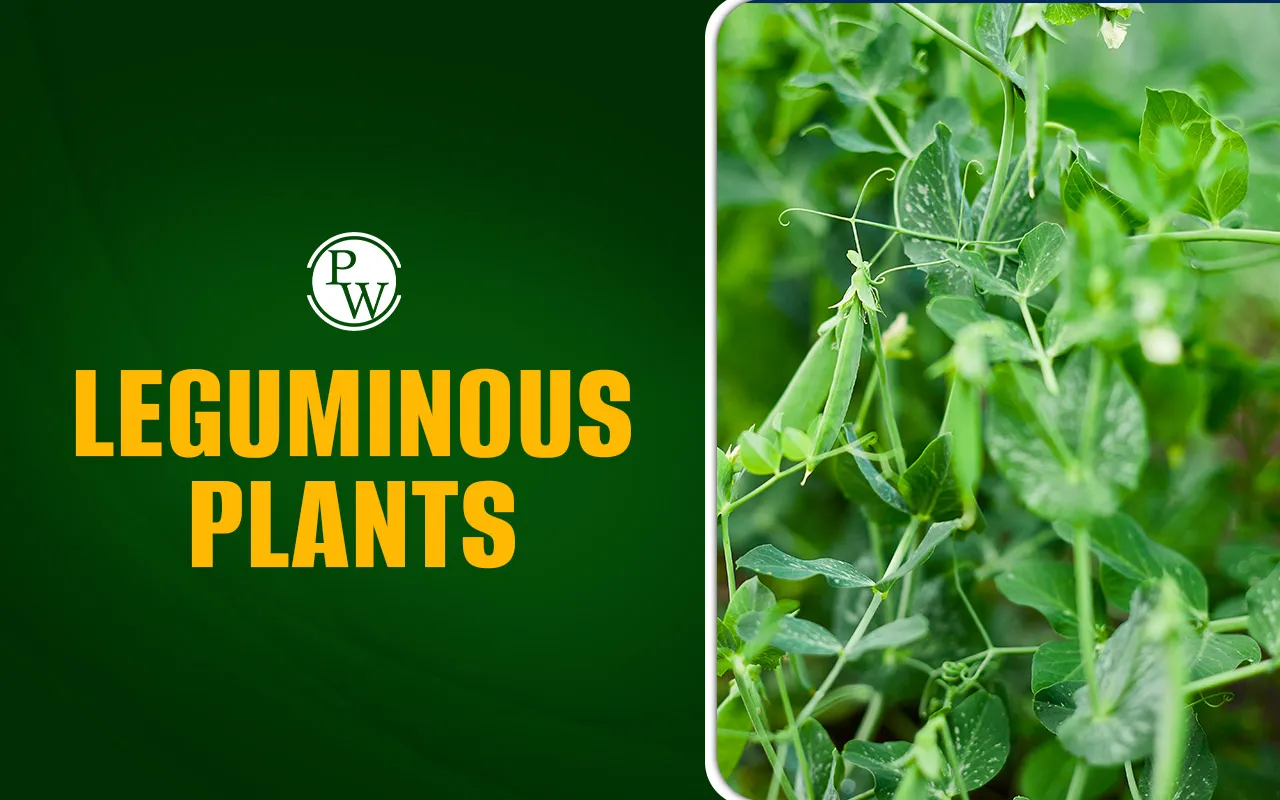

Transpiration in Plants
Transpiration in plants is a process where water is taken in by the Roots. It moves all through the plant and evaporates mainly from the leaves. This process helps maintain water balance, transports necessary nutrients from the soil, and regulates temperature. Transpiration also supports turgor pressure within cells, proper growth and some structural integrity.
It is an important part of photosynthesis. It allows for gas exchange, and allows for Complex variable Environmental conditions. By regulating moisture loss and the transfer of nutrients, transpiration sustains important work processes, allowing for valuable plant survival, healthy establishment and sustainability in the ecosystem as a whole. Below is a diagram of the process of Transpiration in plants:
Read More - Three States of Matter: Solids, Liquids, and Gases
Transpiration in Plants Definition
Transpiration in plants definition describes it as the process by which water absorbed by roots moves up through the plant and evaporates from the aerial parts, primarily leaves. This continuous movement of water provides important minerals to the plant. The water taken up through the root system is transported by the vascular structure, which also helps maintain turgor in cells and even regulates the internal temperature of the plant. In short, transpiration is a very necessary process for a plant to function, thrive, and generally be alive.
Types of Transpiration
Based on how and where a plant loses water, there are three main types of transpiration. These different types of transpiration offer plants' adaptation to various environmental circumstances, as well as maintaining an ideal water balance. Below are types of Transpiration:
|
Types of Transpiration |
|
|
Type of Transpiration |
Description |
|
Cuticular Transpiration |
Water loss through the waxy cuticle covering leaves and stems. |
|
Stomatal Transpiration |
Water vapor released mainly through stomata on leaf surfaces; most common type. |
|
Lenticular Transpiration |
Occurs through lenticels present on stems, bark, or other plant organs. |
Read More - Acids, Bases, and Salts
Factors Affecting Transpiration in Plants
Transpiration is the process by which a plant loses water through its leaves and is influenced by internal (cellular) and external (environmental) factors. The cellular and environmental factors determine the rate at which water is lost from the plant through the leaves.
Cellular Factors
The internal characteristics of a plant that affect transpiration are:
-
Leaf Orientation: The position of the leaf influences the exposure to sunlight and air movement.
-
Water Status of the Plant: Well-hydrated plants tend to transpire more, while water-deficient plants reduce transpiration.
-
Structural Peculiarities of the Leaf: Leaf thickness, cuticle and other structural adaptations impact water loss.
-
Number and Distribution of Stomata: Leaves with more stomata or uneven distribution may have higher transpiration rates.
Environmental Factors
External conditions also significantly affect transpiration:
-
Relative Humidity: The relative humidity indicates the amount of water vapor that exists in air, expressed as a percent of saturation at the same temperature. Transpiration is inversely proportional to relative humidity (higher humidity equals lower transpiration).
-
Temperature: Temperature can lower relative humidity as well as higher temperature. It will even open the stomata regardless of whether it is light or not, which stimulates higher rates of transpiration.
-
Light: Light causes stomata to open while it is day and close during the night. In addition, light stimulates a higher rate of transpiration.
-
Air Movement: Still air decreases transpiration by allowing water vapor to build up on leaves, reducing the diffusion gradient. Air movement removes saturated air, promoting transpiration.
-
Water Availability: Transpiration is directly proportional to the water that is absorbed by roots. If there is low water, the stomata will close and the leaf begins to wilt, leading to a decrease in transpiration.
-
Leaf Surface Area: Larger leaves have more leaf surface area to lose water, thus, higher rates of transpiration compared to small leaves.
Check Out - Work and Energy - A Complete Guide
Significance of Transpiration
Significance of transpiration in plants extends far beyond water loss. It is an important process that maintains plant health, manages temperature and allows volunteer and non-volunteer transport of nutrients. Plants use transpiration to stay hydrated which is important for a living organism to undergo biological processes such as growth, photosynthesis and adaptation to environmental stresses.
-
It maintains water movement and nutrient transport.
-
Provides cooling for the plant in warm weather.
-
It helps maintain turgor pressure, which holds plant structure stability.
-
It assists with the opening and closing of stomata for gas exchange.
Importance of Transpiration in Plants
The importance of transpiration in plants lies in its role in growth and development. Without transpiration a plant is not able to absorb nutrients from the soil, balance water content or properly photosynthesize. Below are some important points on transpiration in plants:
-
It increases mineral absorption from soil.
-
Helps with water balance and wilting.
-
Increase photosynthesis with gas exchange.
-
Creates a climate and environment by adding moisture to the atmosphere.
Improve Your Child’s Learning with CuriousJr
Many children forget what they learn in school, especially in subjects like Science and Maths. This happens because they require extra help and practice to understand the basics.
CuriousJr’s Online Tuition Classes make learning simple and fun. With two mentors in every class, lessons are explained step by step using easy examples and activities. This helps kids understand concepts clearly, think better and stay curious.
Parents also get regular progress updates. Give your child the support they require to enjoy Science and feel confident. Book a free demo class today!
Transpiration in Plants FAQs
What is transpiration in plants?
What are the main types of transpiration?
Why is transpiration important for plants?
Does transpiration occur in all plants?













